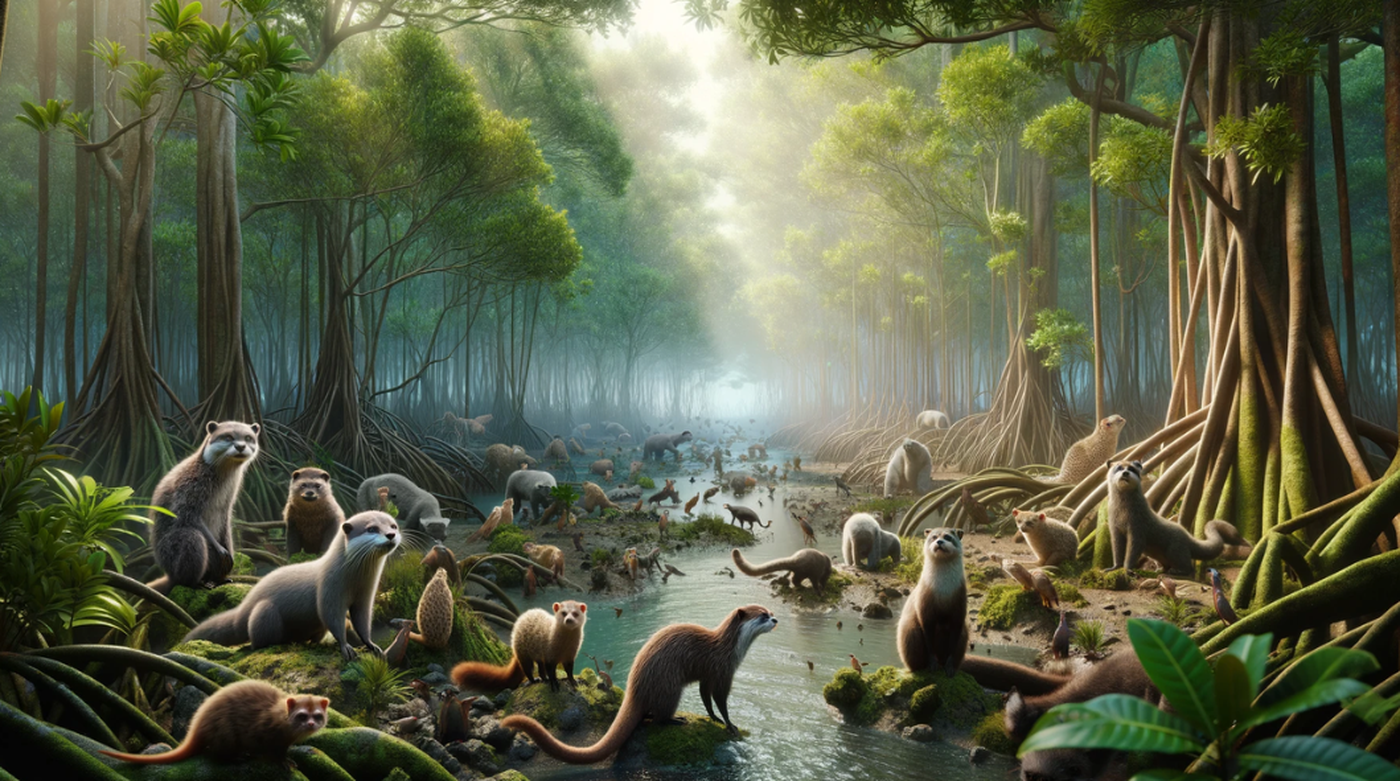In a groundbreaking survey conducted in Cambodia's Peam Krasop sanctuary near the Koh Kapik Ramsar reserve, biologists have uncovered a staggering diversity of wildlife, with approximately 700 species thriving within the mangrove ecosystems.
Diverse Wildlife in Cambodian Mangroves
The extensive biodiversity survey revealed an array of species, including various types of bats, birds, fish, and insects. Among the notable findings were species such as hairy-nosed otters, smooth-coated otters, large-spotted civets, long-tailed macaques, fishing cats, and several bat species. These discoveries emphasize the critical role of mangrove forests in supporting a wide range of threatened wildlife.

Biologist's Insight on the Findings
Stefanie Rog, the survey team leader, expressed her astonishment at the findings: "We discovered 700 distinct species in these mangrove forests, yet we believe this is just the tip of the iceberg in terms of exploring the full extent of biodiversity here."
Importance of Mangrove Forests
Mangroves are vital ecosystems located in the coastal intertidal zones of tropical and subtropical regions. They are uniquely adapted to saline conditions and play crucial roles in environmental protection and biodiversity conservation. Despite their importance, mangroves face significant threats from deforestation, with about 40% already lost to this cause.
Mangroves as Crucial Habitats
The survey highlighted the importance of mangroves as breeding grounds for various fish species, including barracudas and groupers, which are essential for both local communities and commercial fisheries. Additionally, mangroves serve as natural barriers against tsunamis and are effective carbon sequesters, aiding in climate change mitigation.
Fascinating Species: The Fishing Cat
One of the prime discoveries was the fishing cat (Prionailurus viverrinus), a species adept at swimming and hunting in aquatic environments, thanks to its partially webbed paws and specialized claws. This cat's hunting technique involves ambushing prey from within the mangrove roots.
Ecological Studies and Conservation Efforts
The research, supported by the Fishing Cat Ecological Enterprise, also documented 74 fish species and 150 bird species, with 15 classified as near-threatened or endangered on the IUCN Red List. Cameras installed in the mangrove forests captured images of the highly endangered hairy-nosed otter (Lutra sumatrana), illustrating the sensitive ecological balance within these habitats.








